Pernille Ripp's Blog, page 21
March 5, 2019
A Few Picture Books to Celebrate Women’s History Month
Last week, before the calendar switched to March, I changed our book displays in our classroom. Not because we stop celebrating Black history and excellence but because we wanted to add the component of females in history.
I was asked if I would share my list here, and while I don’t mind sharing it, I will say that it has holes. While I wanted to showcase an inclusive mix of picture books, I am still adding picture books that go beyond the well-known stories. I feel like there are many unknown women whose picture books are not on our shelves at the moment, so I am working on finding these for the future. I also want to continue to work on including more indigenous or First Nation stories, as well as stories of women who defy the narrow definition of their gender.
So what is gracing our shelves right now?
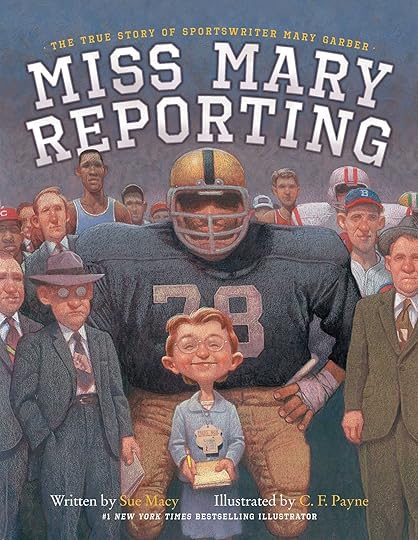
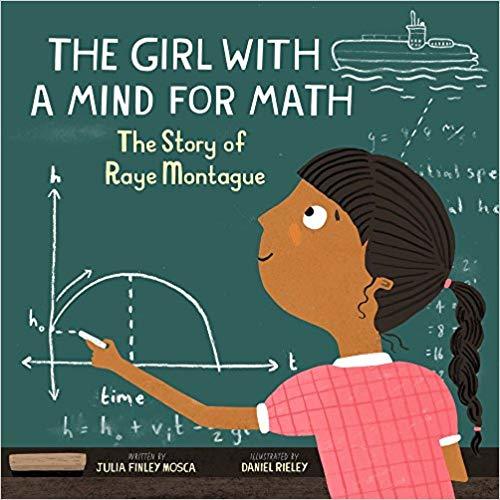
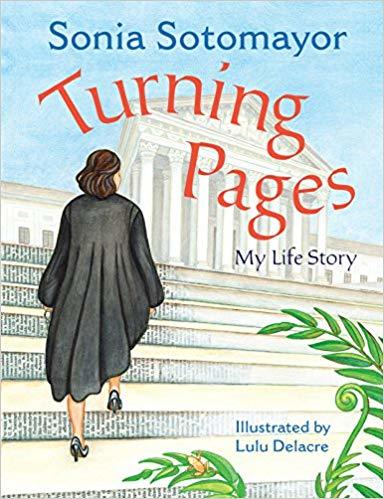
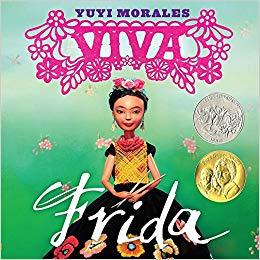
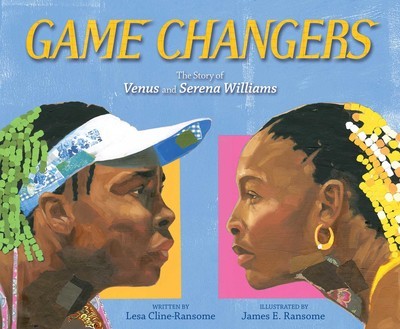
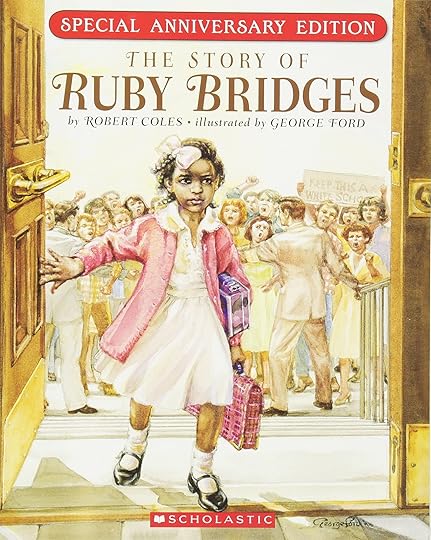
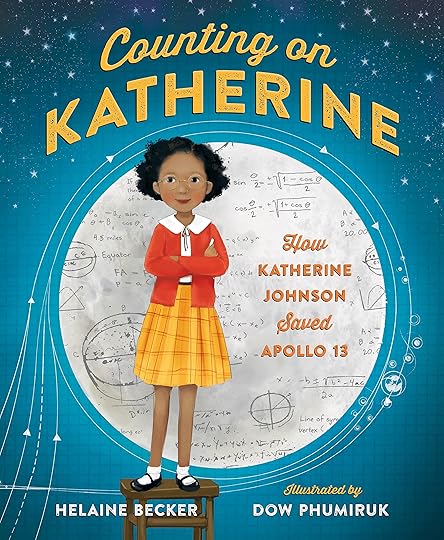
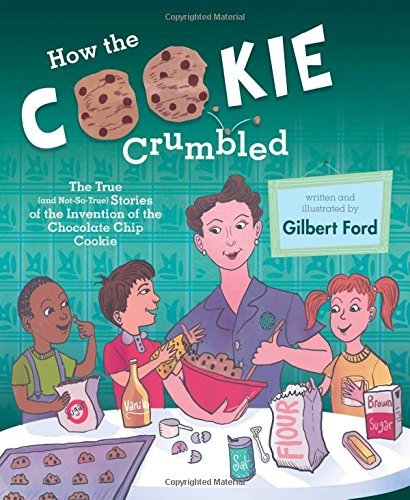


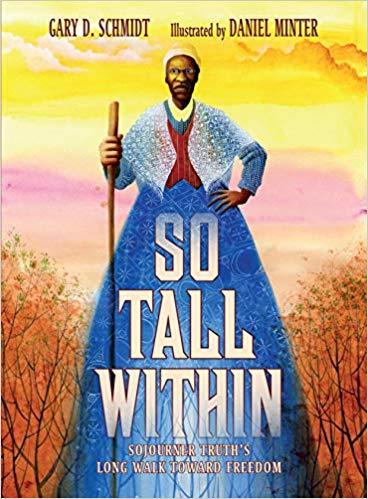
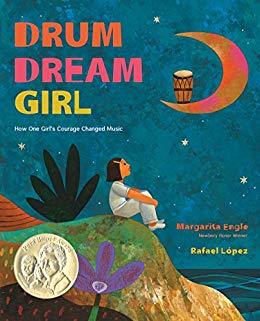


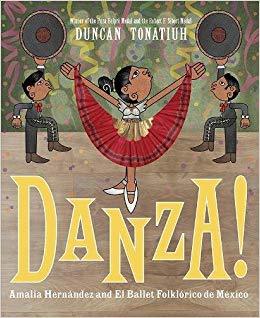
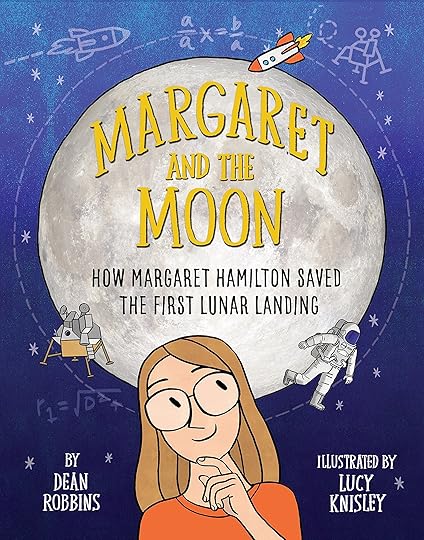
 Yup – two books about the incredible Katherine Johnson
Yup – two books about the incredible Katherine Johnson
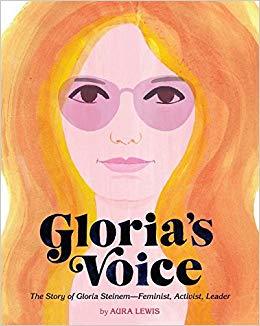
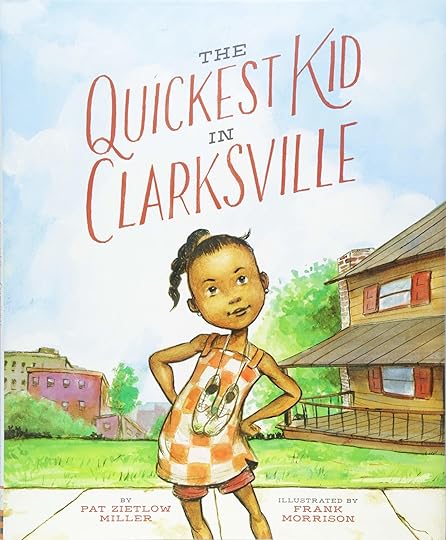 Technically not nonfiction but it introduces/reminds students to Wilma Rudolph
Technically not nonfiction but it introduces/reminds students to Wilma Rudolph 

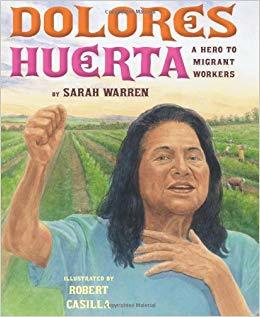
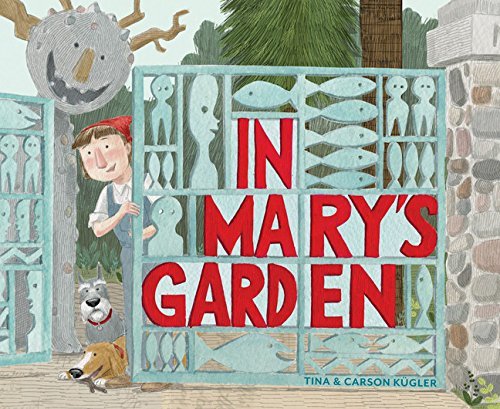
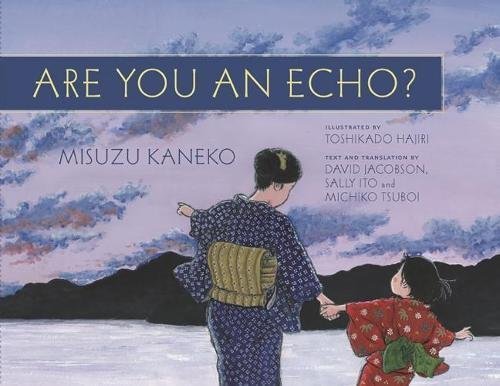
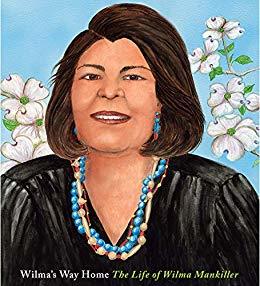
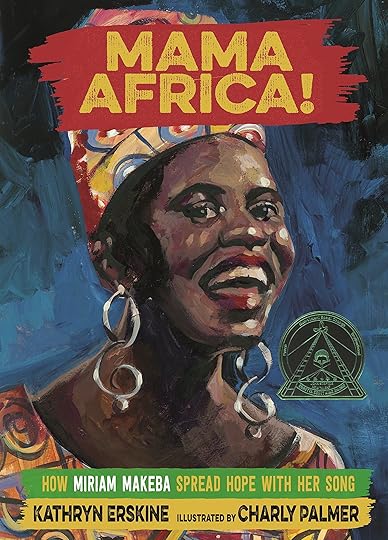
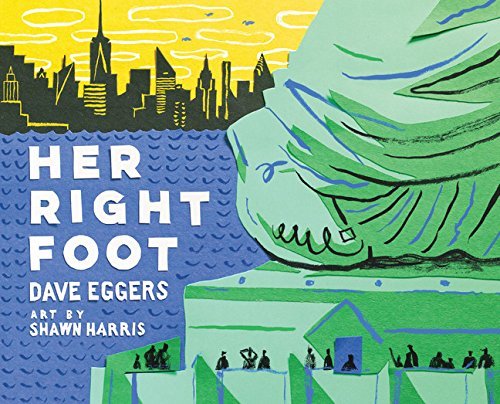 Technically not a person
Technically not a person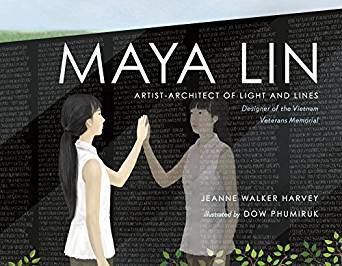
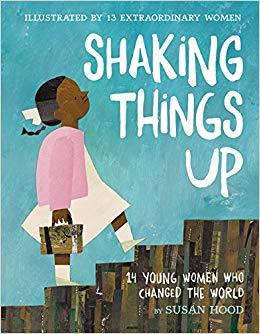
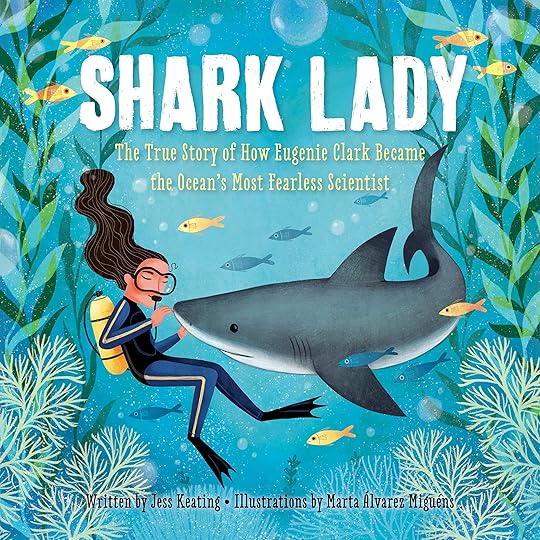
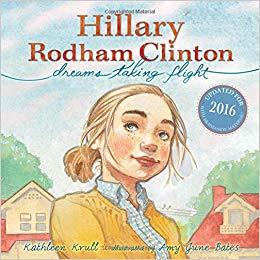
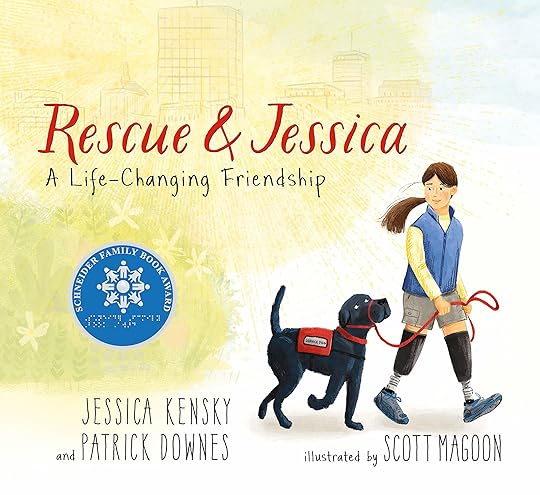
 Technically not nonfiction but representation matters as far as stories
Technically not nonfiction but representation matters as far as stories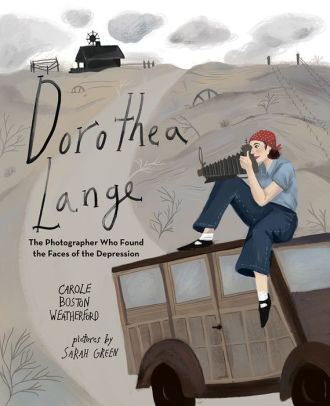
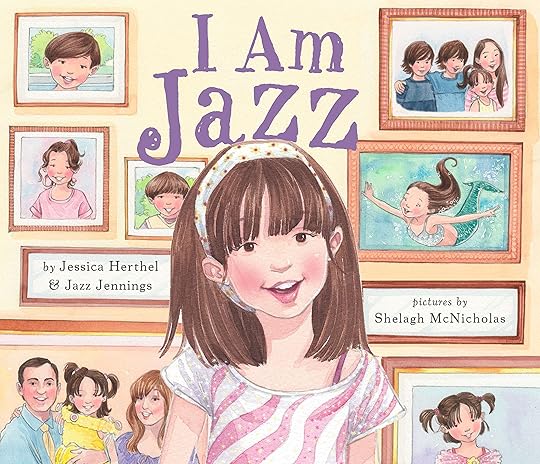

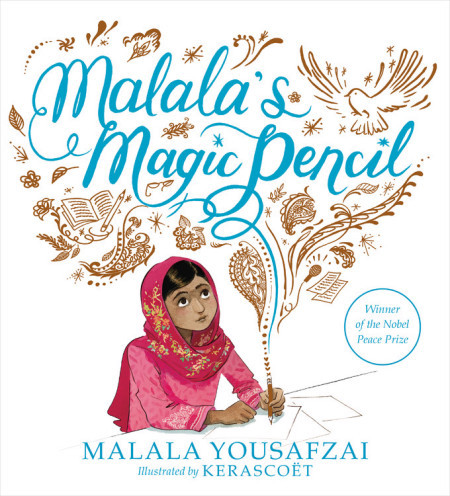
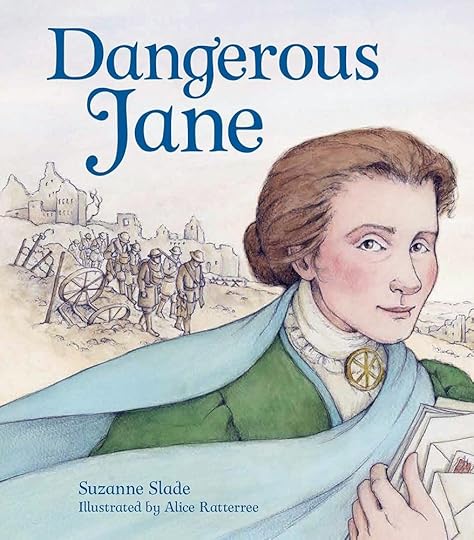

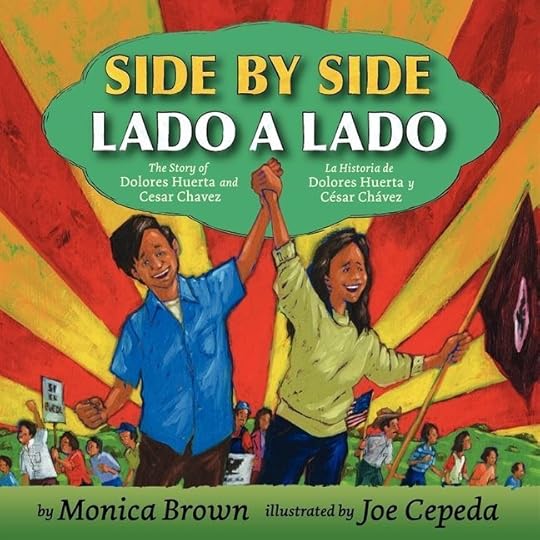

By no means is this an exhaustive list. We also have some of the picture books left out from last month that feature courageous women. If I had more space, I would have any more. Which are your favorite picture books for March?
March 1, 2019
To the Moments
This is not a revolutionary post. One that will echo through our chambers as it brings forth the message of new. This is not radical, nor groundbreaking, but instead a gentle reminder to the world at large of what the small things can really do.
That when we take a moment, the moment, to say thank you, to acknowledge, to praise, the ripples that emanate may just one day turn into waves. May make the difference between a child who felt school was unsafe now is a place for her after all.
That when we go out of our way, come back to the way, of what it means to see how a child is trying, how a child is doing, what a child wants to be, we may just remind them that they are, indeed, all we need them to be.
So this is a thank you to the smiles and the hi’s. To the people who stand outside their classrooms, their offices, their schools and busses and every day greet the people with the loudest hello they can.
To the notes and the postcards, to the gotcha’s, and high fives. To the praise that matters and the shoulders that carry. To the scoot in’s and scoot overs. To the “Are you ok’s?” “I got this” and “Any time…” To the hugs, the goodbye’s, the thank you’s and taking the time. Every time. Any time.
A thank you to the quiet moments and the not so quiet. To the questions, the laughs, the aha’s and uh-oh’s.
But most of all, thank you to the people who saw our daughter for everything she was and not everything some wanted her to believe. Today, through your recognition, she started to believe it a little bit more, that she, too, is somebody worthwhile. Today, she saw for the first time in a really long time, what we have never lost sight of. A kid that matters. A kid that matters to others. A kid that is somebody.
February 24, 2019
Using the Single Point Rubric for Better Assessment Conversations
A few years ago, I read the following post discussing single-point rubrics from Jennifer Gonzales on her incredible blog Cult of Pedagogy. The post discussed the idea of using a single-point rubric for assessment rather than the multi-point rubrics I was taught to use and how they were not only easier to create, but also offered up an opportunity for students to understand their assessment in a deeper way. Intrigued, we started tinkering with it over the last few years as an English department, developing our process as we went. The other day, I realized that I have never shared that work on here and thought that perhaps if someone had missed Jen’s post or was wondering what this looks like implemented, a blog post may be helpful.
So first of all, what does a single-point rubric look like? Here is an example of one we used with an assessment after finishing the book Refugee for The Global Read Aloud.
[image error]
We operate on a 1-4 standards-based assessment system, so the difference between multi-point and single-point is the descriptive language found for each score. Where under a multi-point rubric you would fill in the description for 1 through 4, with a single-point rubric you just focus on what you would expect an at grade-level product to contain. This is what sets it apart in my mind; it allows us to focus on what we are specifically looking for and recognizing that students don’t always fall into the other categorizations that we set, no matter how much we broke them down.
This is one of the major reasons why I have loved using single point rubrics; it allows me to leave more meaningful feedback for students when they are either not meeting the grade-level target or are exceeding it. Rather than trying to think of all of the ways a student may not be at grade-level, I can focus on what would place them there assessment-wise and then reflect on when they are not. This has allowed me to leave more meaningful, personalized feedback, while also really breaking down what at grade-level thinking contains.
So what is the process for creating one?
Determine the standards or learning targets that will be assessed. Students should be a part of this process whether through discussion and creation of the rubric or at the very least seeing and understanding the rubric before anything is turned in, after all, we want students to fully understand what we are trying to discover as far as their learning.Once the standards have been determined, decide what “at grade-level” understanding will contain. While the rubric shown above shows only one box per standard, sometimes our rubrics are broken down further within the standard in order for students to see exactly what it is we are hoping to see from them. (See the example below).Discuss with students if you haven’t done so already. Do they understand what at grade-level understanding looks like and what it contains? Is the rubric a helpful tool for them to take control of their learning? If not, go back to the drawing board with the rubric. Add reflective questions for students so that their voice is heard and further ownership is created over the learning process. This is important because too often assessment is something that is done to students rather than a process that allows students to fully see what they are able to do independently, as well as set goals for what they need to work on.
[image error]
[image error]A few reflective questions – to see the original rubric, go here
Using the single-point rubric is a breeze for me compared to the multi-point rubric. First of all, it takes less time to create because we really just focus on that “at grade-level” understanding. Secondly, and this is the big one for me, it allows me to deeply reflect on why my gut or the rubric is telling me that a child is not showing “at grade-level” understanding or above it somehow. I have to really think about what it is within their understanding that moves them into a different category. One that is not limited by the few things that I could brainstorm before I saw their work. I then have to formulate that into written or spoken feedback in order to help that child understand how they can continue to grow. This allows our assessment conversations to change from grades to reflection.
Tips for implementing:
Discuss it with students before using it the first time. Our students had not seen a rubric like this before and so we took the time to discuss it with them before we used it. This would happen for any assessment rubric, but it took a little bit longer because it looked different.Set the tone for assessment. I have written extensively about my dislike of grades and how I try to shift the focus, and yet I work within a system that tells me I have to assess with numbers attached to it. So there are a few things that need to be in place with the biggest one being the ongoing conversation that assessment is a tool for reflection and not the end of the journey. This is why students always self-assess first in order to reflect on their own journey and what they need from us. This can be messy in the beginning but through the year it gets easier for students to accurately reflect on their own journey and what they need to grow. They then hand that to me in order for me to look at their work and then it culminates in a final discussion if needed.Break it down. It is easy to get caught up in too many things to assess, using the single-point rubric has allowed us to focus in on a few important things. This is important so that students can work on those skills specifically rather than feel overwhelmed by everything within the process.
What do students think?
Our students seem to like them, or at least that is what they say. They understand mostly what they are being assessed on and they understand the feedback that is given to them. Having them self-assess and reflect prior to our assessment is also huge as it shows students that they are in charge of their assessment and their growth and that we want them to fully invest in their learning. It gives them an opportunity to see how they are growing and what their next step is before I add my opinion in there. This can also help reduce the “shame” factor that is sometimes associated with grades. When we discuss repeatedly with students that there is nothing wrong with being below grade-level and instead let the assessment guide us to the next steps, it shifts the assessment process, as well as the internalization of grades.
Overall, the single-point rubric has been another tool that allows us to help students become more reflective learners, while also helping us get to know the students’ needs more, resulting in a more impactful assessment experience for everyone involved. While we started small, the single-point rubric is now almost exclusively the only type of rubric we use in English and for that I am grateful. If you haven’t tried it yet, I would highly recommend you do. If you have any questions, after all my brain is tired from traveling, please leave them in the comments.
If you are wondering where I will be in the coming year or would like to have me speak, please see this page. If you like what you read here, consider reading my book, Passionate Readers – The Art of Reaching and Engaging Every Child. This book focuses on the five keys we can implement into any reading community to strengthen student reading experiences, even within the 45 minute English block. If you are looking for solutions and ideas for how to re-engage all of your students consider reading my very first book Passionate Learners – How to Engage and Empower Your Students.
February 21, 2019
What Are They Trying to Say?
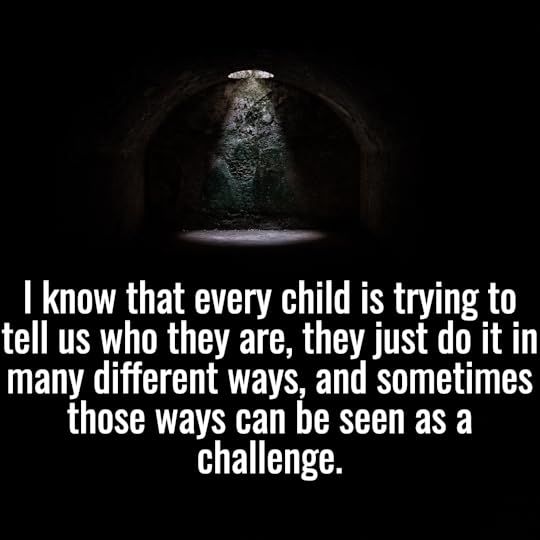
As I sat with colleagues not too long ago discussing a shared former student, it was mentioned how she still sees me as an ally even though I no longer teach her. Hard to believe as this was the same child that slammed my door loud enough to shake the team area while telling me exactly what she thought of me and *!@&*% class. And yet, still, to her, I am someone who cares. To her, I am someone who still has her back, despite our ups and downs while I had her.
We all have these children in our memories, perhaps you are teaching one right now (or many). The kids whose love language seems to be filled with protest, with ways to push us as far away as possible. Whose method of communicating their lives and their needs do not follow the same path as our own. How these kids, our kids, sometimes are the ones that carve out the biggest place in our days and in our hearts as we try to understand what it is they are trying to tell us. How they often make us feel like failures when our latest attempt at connection was dismissed and not enough. And yet….in every moment, in every day, we have this incredible chance to show that no matter what they throw at us, we can still be there, we can still care, we can still ask if they are okay rather than react in a more volatile way.
We speak so often of our vision for what our schools should look like. What they should sound like (silent in some cases which is terrifying but that’s for another day). What they should feel like for every kid. We plot and we plan. We dream and we train, and yet, some of that seems to be forgotten the very moment a child fails to live up to our expectations (thank you, Shana White for that thought). The moment a child seemingly steps out of line. We throw our hands up in exasperation, lose our temper, and quickly a situation that did not need to spiral out of control has done just that. Just because we had to prove a point.
I can only speak for myself, I try to not yell. It is something I work very hard at. Not because there are no situations where yelling might be used, but because I think the act of an adult yelling is only to be used in true emergencies. Yelling is only to be used when things are really dire. I don’t want to scare, nor intimidate my students, why would I? Instead, I try to treat these kids as the human beings they are; complicated beings who are carrying their own set of burdens every single day, just like I do. I try to treat them the same way I want to be treated; with concern, with an eye on my humanity. Not in an angry, authoritarian way, because in the long run, it does more damage than good.
So as I think about our school system, about the horrible inequities that exist, especially for marginalized populations, I think of what I can do. How I can certainly share the information that inspires me such as this article from Teaching Tolerance, but also the small things that I can do within my own sphere; our classroom. How I can approach each situation with calmness, how I can approach each child with care rather than anger. How I can ask if they are okay rather than jump to conclusions, how I can ask how I can help, how I can respond in calm rather than anger. How I can use humor and trust to try to diffuse the situations that arise. That I can try to be a part of a classroom that functions on humanity rather than punishment. How when I mess up, because I will, I can apologize and try to do better.
I know that every child is trying to tell us who they are, they just do it in many different ways, and sometimes those ways can be seen as a challenge. Yet, I know how deeply I care about my own story being told and heard, I can only imagine that our students do as well. Yes, our system needs to change, and we need to be a part of that, but that change starts right within our own spaces in how we treat the very children we get to teach every single day. How we protect their humanity even as they sometimes rage. We will never know their story if they don’t ever trust us enough to share it.
If you are wondering where I will be in the coming year or would like to have me speak, please see this page. If you like what you read here, consider reading my book, Passionate Readers – The Art of Reaching and Engaging Every Child. This book focuses on the five keys we can implement into any reading community to strengthen student reading experiences, even within the 45 minute English block. If you are looking for solutions and ideas for how to re-engage all of your students consider reading my very first book Passionate Learners – How to Engage and Empower Your Students.
February 17, 2019
Passing on A Few (Book) Recommendations
One of the most common questions I am asked is for a book recommendation. Whether through Twitter, Facebook, Instagram, or any other place I happen to be, the question typically follows a pattern; the questioner is asking for a book recommendation for a very specific situation to help a specific student. While I am flattered to be asked and sometimes a book does pop to mind for that situation, often times I am not sure because either I am tired or I am simply not sure.
And yet, I do recommend a lot of books. In fact, this is my only purpose for having an Instagram account and I also keep track on this blog. I love books and I also love sharing them with others, which is why I am writing this post. You see, I rely heavily on the recommendations of others as well, so I thought it might be nice to highlight a few of the places I get recommendations from.
My students. Right now, there are a few books flying around my classroom that are fully recommended and started by students, one being the book This is Not the End, which several kids have gushed about to me and I have just purchased to read myself. Who are the students who are dying to recommend books to you?My colleagues. I love that I am surrounded by colleagues who read, and I especially love that they also love to share. From our principal to the English department, to the special ed staff and the office staff, to our incredible librarian staff and all of the other adults at OMS, we are a school of readers. It is not uncommon to see books passed throughout the day or left on people’s desk, just in case they need a great read. Who are your colleagues that can become a part of your book squad?My online friends. While back in the day the term “online friends” would have brought up frightening associations, now I cannot help but be so eternally grateful for all of the friends I have that I know through social media. They share freely on Facebook, Instagram, and Twitter and I love that our book conversations continue even when we are not close in distance. It does get expensive to hang with some of my friends, but it is the best kind of expensive; book expensive.Our library. Both our school one and my local one. I love to browse the displays and see what is being recommended. This has led me to the book Sadie and Openly Straight, which are both staring longingly from my to-be-read shelf. Librarians are amazing resources; make friends with them! My own kids. My own kids go to an amazing elementary school here in Madison and not only do they have an awesome librarian but they are also surrounded by staff members who love to read and share their love of books. I love when they come home with new discoveries and tell me that I have to read this book as well, especially since they read books I normally wouldn’t read like early readers. So get connected to your children’s school if you can and see what they are reading.Online, but of course. There are so many amazing people sharing book recommendations using whatever tool they love. Read on for a list of a few of my favorite people and places.
Reading While White. This blog with its emphasis on “White librarians organizing to confront racism in the field of children’s and young adult literature” has been an incredible resource not just to find new books, but also to think critically about some of the books I already have in our classroom. This is a blog that is worth subscribing to.
The Brown Bookshelf. With its emphasis on pushing “…awareness of the myriad Black voices writing for young readers,” this is a must read. Countless books have made it into our classroom because of the recommendations and discussions on this blog.
American Indian in Children’s Literature. This blog run by the fierce Debbie Reese is one of the blogs that lands in my inbox whenever she publishes a new post. With her emphasis on “…critical perspectives and analysis of indigenous peoples in children’s and young adult books, the school curriculum, popular culture, and society.,” this blog is an invaluable resource for all of us. Not only does Professor Reese recommend books, but she also helps me realize when a book is problematic or worse. She has really influenced not just our classroom, but much of the work I do for the past many years.
Nerdy Book Club. This is where I first got connected and I am so grateful I did. With its emphasis on reviews, ideas, and cover reveals, Nerdy is really a community where you are sure to see not just incredible new books, but also add many new titles to your library.
Edi Campbell’s blog CrazyQuiltEdi is a fantastic resource for anyone who is looking for books written by or featuring POC. Not only does Edi Campbell release a monthly new release list, but she also reviews, and discusses the history of important issues such as when “people of African descent are equivocated with monkeys, apes or gorillas.” This has been really eye-opening for me and I am so grateful for the work she does.
I’m Here, I’m Queer, What the H*** Do I Read? The title probably speaks for itself, it is a great resource for me as I continue to add more books with great LGBTQ+ representation to our classroom.
Disability in Kidlit. While the last blog post was published more than a year ago, the archive is still worth digging into. This blog with its promise to have people who have disabilities review books that feature their same disability has been eye-opening on more than one occasion. I loved the blog when it was “live” but the blog is still worth your time.
CCBC. Living in Madison, Wisconsin, means I am in the home city of the CCBC or the Cooperative Children’s Book Center and it is fantastic. I get to go to the events hosted there, as well as their twice-yearly book sale. However, you don’t have to be in Madison to benefit from their wealth of knowledge. Their blog is a great place to start to stay up to date with great books, as well as their research on the state of children’s publishing and many other important issues.
Latinxs in Kid Lit. Another specialty blog that does so much great work. With its emphasis on sharing reviews, news, and discussions about Latinx in children’s book, I often fill our shelves with recommendations from here. Their interviews of authors have also helped me dial into a few new authors I was unaware of.
Lee and Low. While Lee and Low is a book publisher, they also have an incredible blog that not only features recommendations but also invitations to their free webinars on pressing matters within teaching and children’s literature. Specializing in Own Voices authors, this is a must follow.
By no means is this an exhaustive list. There are so many great people and groups out there sharing their recommendations, but I thought it would be nice to recommend a few of the ones that I rely heavily upon. By sharing, I figured it is a way to say publicly thank you to all of those who recommend books to me as well as allow others to get plugged into the incredible knowledge that is shared here. One word of caution though; it does get expensive because the book sounds so amazing. What are your favorite places to get recommendations from?
February 16, 2019
An Update on Our Student Reading Action Plans
A few weeks ago, I blogged about an idea I was trying in our classroom as a way to help the kids who seem to just not be “there” just yet. Who seem to just not have found a great book just yet. Who seem to just not be really reading more than a few pages a week. Who seem to be going through the motions rather than fully investing. Who seem to go from book to book without ever really sinking in. The idea was simple; do a daily check in for two weeks with just a few kids, ask them about the book itself but focus more so on their habits. It couldn’t hurt, right?
So for the past few weeks, this is what I have been doing. Taking a minute or two and checking in with just a few students, not ignoring anyone else, but starting with these few kids first to make sure we had a conversation about the book they were reading, as well as how they felt as readers.
What have we uncovered in these small conversations? Lots actually. Some things I already knew, such as how they felt about reading, but also some things I didn’t. How many of them don’t know when they should book shop, how many of them have a to-be-read list but don’t use it for anything, how many of them pick books that for whatever reason are the wrong kind of challenge for them at that time. And within these moments of revelation lies the entire heart of what I hope all of these incredible students will experience this year; a reading experience that is meaningful to them. And so these moments, based around a simple premise, it was exactly what I had hoped would happen; establishing a deeper relationship with these students as we unravel their reading identity further.
It turns out that almost all of them are having an incredibly hard time selecting a powerful book for themselves. That while they have had some positive experiences with books in the past, they don’t exactly know what made that book amazing. How many of them stick with the books, dreading every moment, rather than searching for something better. That they will “settle” on an okay book rather than pursue something better because they don’t think that better exists. That despite all of our conversations about book choice, book abandonment, paired with ample book access and book recommendations from their peers, from me, from our librarian, it is still not enough.
But these conversations; these few minutes we are having together every single day is helping them realize that there is more to reading than just going through the motions. That they deserve a great book. That they should demand for themselves to read incredible books and that that starts with knowing themselves better as a reader and also taking the time it sometimes takes to find their next read. So as the two weeks wind down for a few of the kids, some I am going to start seeing them every few days. Some I will continue to speak to every day, while some are ready for a trial period without me. New kids will be added, new goals will be set, new conversations await. And with that will come the continued reminder that all kids deserve our undivided attention, that all kids can have better relationships with reading, that all kids deserve to have outstanding reading experiences, even if they don’t know it yet. Some just need a little more attention to get (back) on the right path.
If you are wondering where I will be in the coming year or would like to have me speak, please see this page. If you like what you read here, consider reading my book, Passionate Readers – The Art of Reaching and Engaging Every Child. This book focuses on the five keys we can implement into any reading community to strengthen student reading experiences, even within the 45 minute English block. If you are looking for solutions and ideas for how to re-engage all of your students consider reading my very first book Passionate Learners – How to Engage and Empower Your Students.
February 9, 2019
Teaching Bias Through Inference and Identity
I can’t remember the last week we had a full week of school. Between snow days, cold days, and now an ice day, I think it was December the last time I had the pleasure of being with our students for five days in a row. All of these days off have given me time to think, a luxury it seems within teaching, and in particular about how I can use the units my team had already planned to expand our work on bias and social comprehension.
Now, before I share these ideas, I want to make something very clear; I am not an expert on this work. In fact, I have gone back and forth on even sharing what we are doing because this is truly something I am working on myself, something that is nowhere near perfect, and something where I lean heavily on the work of others to do my own work. And yet, perhaps it is exactly this insecurity of trying to get things “right” that holds many educators back from doing any of this work. So perhaps then, this post will help someone else take the plunge, much like I have. I go into this work knowing that I have much to learn and that starting it is the right step for me, even if I am bound to screw up.
Focus of Unit:
Old focus: So our original main goal for the past few weeks was to focus on inferring and how we use evidence to support our inferences. In the past, I have written about the work we have done here, and while the work was good and reached its intended learning outcome, it also was a missed opportunity to discuss how what we infer is directly related to our perspective, our identity, and the bias we may carry.
New focus: So the new goal became focusing on inferences and how the evidence we use to support them are shaped by our identity and bias. A subtle difference that has made a huge difference in all of the work we are doing.
Some Resources used:
While I had my original slides that contained some great ideas, I knew I needed further resources to guide me in this work. Some of the resources I have turned to have been:
Teaching Tolerance – one lesson plan I am using is their ideas for teaching bias in the media through tone and word choice, however, these are not the only resource I am using as their webinars and their articles shape so much of my thinking.Allsides.com I appreciate the collection of articles here that allow my students (and us) to really see how news can be reported to us and what it may look like from different news sources. This news site will also open up an opportunity to discuss whether the site itself is unbiased in how it is reporting others.Being the Change: Lessons and Strategies to Teach Social Comprehension by Sara K. Ahmed. This book has really helped me think about how we can teach social comprehension through identity work with students. It is incredibly well-written and offers up a wealth of ideas no matter where on the journey you are. Time Magazine and their collection of iconic images as we discuss what we see versus what we can infer. I am also using these images to help students discuss which parts of their identity may be reflected or triggered in the images.#DisruptTexts and their mission of disrupting the common narrative that shapes many of our literacy experiences.The National Equity Project is partnered with our district so a lot of the images and information I use is coming from the training they have been giving us. Professor Deb Reese and her work in the critical analysis of the representation of Indigenous People. One of the threads of our conversation has been why we are not as “triggered” by the racist or stereotypical representations of Native Americans in our everyday life. One student shared yesterday that she has realized that she hasn’t been triggered by it before because there has been such little shared throughout her education and life about indigenous people in general except for stories of how they might have been in the past.Social Identity Wheel and the personal identity wheel shared by Inclusive Teaching at the University of Michigan.Jess Lifshitz and the work that she does with her 5th graders in Illinois. She has written extensively about her work on her blog and also who she is inspired by, as well as shared great resources.
This is not an exhaustive list as I am so grateful for the work of many and I highly encourage you to read a lot, to seek out opportunities to learn, and to become connected to others who are doing this work. This is also why I am purposefully not sharing my handouts and slides, because they are created specifically for my students and are based around the learning I am doing myself. I really feel like all educators, especially white educators like myself, should be learning more about this and taking on this work, if I just share all of my slides then the work may not be started..
Guiding Questions
Much of our in-class work has been reflection and discussion based, rather than creating products, which is how we normally function anyway. I wanted students to have an opportunity to work through this with each other, if they chose to, and also reflect quietly if they wanted to. I also want to honor the varied lives my students have, some are deeply aware of the bias others have because this is their lived experience, while some would be brand new to the idea of bias. I think this is simply the balance many of us face. I set this up in stages because some things took longer, some things we needed to circle back to, and I didn’t want to rush this. Once again, I realize that this is just a start, it is not the only work that needs to be done here.
Stage 1:
The focus of stage 1 was establishing a common definition of what inference is and also activate background knowledge. Questions we used accompanied with images and video clips included (amongst other resources):
What does it mean to infer?How does our perspective and lived experience shape what we infer?How does perspective change what we infer?How do you think others see you?Videos used to support this work: Americ’s Funniest Home Videos, Michael Murphy’s Epic Anti-Gun Artwork for the DNC, The Guardian’s Point of View Advert, One Man – Six Stories
Stage 2:
The focus of stage 2 was picking up on missed clues and why we might have missed them. Questions we used included:
Writing about how others see you.What do we need to do make correct inferences?What do advertisers want us to intentionally infer about their products?What do advertisers unintentionally have us infer?How does bias shape you?Using the first half of the story Wisconsin Winter we look at a text focused on what the main character is like. Then students are given the second half and we use it to discuss how we miss clues that seem obvious when we have the whole story.What are different types of bias?
Stage 3:
The focus of stage 3 was different types of bias and how we see the world as individuals. We used a lot of different images to do a lot of this work, as well as news headlines. Questions we used included:
Stage 4:
What associations do you have when you see…using a variety of images.How do assumptions play into bias?How does the media shape us in our understanding of a situation?How may this strengthen or diminish our bias?
The focus of stage 4 was what do we see versus what we can infer. I felt it was important that students saw how much inferences plays into how they view an event, a person, or the world in general. Questions we used included:
What do you see?What do you infer?What are you basing those inferences on?What is the historical perspective of this event using Time Magazine pictures?How does your identity and experiences affect your inferences? We used the personal identity wheel to help us think about how we see ourselves.What are the associations you have using a list of words such as Family, love, marriage, police, school, and Thanksgiving?
Stage 5:
The focus of stage 5 is identity and which pieces of our identity we put more weight on which then, in turn, influences how we react to the world and what we think. Questions we use include:
How do your identity and experiences affect your inferences again?What do you notice when we search for certain things on Google such as “Smart kid”, “Family” or “Native American” – how do you think these images affect you?We also juxtapose our associations for the word “Thanksgiving” to those shared by some Native Americans in this video and then discuss why we may have different associations with the word.Then we reflect privately on the questions posed on the social identity wheel.
Stage 6:
The focus of stage 6 is thinking about how our identities are triggered by images, videos, headlines and such. This is leading us closer to our end reflection, which is based around students finding an image that connects with their identity in some way. Questions we use include:
Do you connect to this image? Why or why not?If you connected to it, which part of your identity was activated?How might this connection affect how you view this image?How does bias play out in the news?How does bias play out in your own identity?How does word choice and tone affect our understanding of a news event?How might the news shape our understanding of the world?
Stage 7:
The focus of stage 7 is introducing our end reflection; how does our identity frame how we connect to something as well how might our bias play out in our understanding? There is so much more work to do, but in order for students to have some time to process and internalize all of this work, I want them to have some time to reflect and put the work into the world they are faced with. That is why our “end” product is asking them to reflect on how they see their identity reflected. Some of the questions they can reflect on include:
On the social identity wheel, what were the identities you thought the most about?Which social identities have the strongest effect on how you see yourself?Which part(s) of your identity is reflected or reacting to the piece you found? Or is it that your identity is not reflected in the piece?How is your bias reflected in the image/video?What, in particular, makes you connect with it (evidence)?What does your identity make you infer in the image or video?Which identities have the greatest effect on how others see you? Is this good or bad?
Students will have time in class to find an image or video and then to discuss before they write.
Throughout the entire unit, I hope students get a chance to reflect on who they are and how all of this may play into how they see the world. It is a start as we continue our work for the rest of the year, which involves debates, TED talks, and also much more reading and reflecting. This work will become part of our existing foundation as we move forward with the work that we have planned, hopefully allowing students to take a step back and notice how bias plays out in the world around them and in their own lives. This is not the only thing we will do, it is not the only thing we have done, but it is another concentrated effort in order to help students understand the world more. As always, I am so grateful to those who share their expertise with us so that we can all grow and help our students grow as well.
February 1, 2019
Creating an Action Plan to Jumpstart a Better Reading Experience
Winter always hits us hard here in Wisconsin, and yet, this week, we broke records. It got so cold, everything shut down, the stores, the malls, the movies, even the bars shut their doors as the police told people to stay home. I spent three days by the fire playing games, reading books, laughing with my kids, and thinking so often about the other kids I have; the students I get to teach.
Because some of them are still not liking reading. Some of them still outright refuse. Some of them still go through the motions of what it may look like to read, but that spark, that change, that seed, doesn’t seem to have taken root, not yet.
And yet, there are many where the reading blossoms and continues to grow. Whose readerly lives seem to have taken on a life of its own. Who can tell you all about what it means to read, to be a reader. For them, I can breathe a little easier. For them, I can stay the course.
Yet for the ones who are not there yet, I need a new plan. Not one with more requirements or different reading “rules,” not one that veers off from our foundation: time, choice, access, community, and reflection. But instead a more concentrated approach. The check-ins I have with them every three or four weeks is not enough. They need a reading intervention, but not in the traditional sense. Instead, I am making them my action plan for the next few weeks to see if a concentrated boost is what they need.
So what I plan on doing, at least what I think I plan on doing, is simple – more attention, more conversation, more intentionality.
Step 1. Identify the kids who seem to be not there yet. Make a short list of those who need extra attention. Don’t forget about the rest of the class, but for the next few weeks; focus on these kids. I plan on focusing on no more than three a class.
Step 2. Pull a stack of irresistible books, these are the books that seem to have made a difference to kids in the past. Books like Monster, A Long Way Down, Hey Kiddo, and Boost. (I have a list going here).
Step 3. Start a conversation, I can use what I always use, “What are you working on as a reader?” However, I plan on each conversation lasting a little longer and centering around what I have noticed such as random book selections, little interest in what they are reading, and trying to figure out why. In my experience, students don’t always know why so this is where I can help a little with questions about their reading identity and their reading habits. What else can we uncover about their reading journey that can help them know themselves better and grow?
Step 3 1/2. Ask them how they can change their habits of reading. Help them uncover what is holding them back from reading, even if it is a lack of desire and discuss which habits can be altered to change their experience. Is it that they need a book at school and at home? Is it that they have yet to find a book they like but aren’t really looking? Is it that they are overwhelmed? Or that it seems pointless? What is it that is making them choose to not transform their reading experience?
Step 4. Help them set a mini-goal for the next week of reading. While all students have a year-long goal, for some kids year-long goals don’t seem very urgent, so focusing on a small success is more tangible and also more pressing. Discuss how they will hold themselves accountable, and let them know that I plan on checking in with them each day to see how they are doing, not in a judgmental way but as a coach and pep-talker. Have them write the goal down, I also plan on writing the goal down or I will not remember the specifics.
Step 5. Book shop together and enlist the help of a friend if they want. Pull out the stack of irresistible books and see if their friend has any suggestions. Give them time to truly browse the books, not just rush through selecting one. Coach as needed, step away so they have room.
Step 6. Daily check-in. Once the book has been chosen, then the conversations continue. Ask about their goal progress, ask them how I can support, and keep kid watching. Is anything changing? Why or why not?
Step 7. At week’s end, do an official goal check-in. Did they meet their goal? Why or why not? What needs to change for the following week?
Step 8. Keep checking in until end of the second week. Then figure out if they are on a better path or not. If not, back to the drawing board. If they are, then pull back a bit and see how they do. Scale back the check-in and focus back on all kids (not that they were completely forgotten), but it is time to see if this changed any habits at all.
Step 9. Remember that success comes in small steps. Remind myself that it is not a failure if a child only kind of liked a book, rather than loved it. Most kids need more than one book to transform their thinking.
A simple plan that I am sharing, simply to hold myself accountable. I am excited to see what this focus in attention will do for our readers. Hopefully, it will help them, if not, then I will think of something else to try. After all, there are plenty of ideas out there being shared.
If you are wondering where I will be in the coming year or would like to have me speak, please see this page. If you like what you read here, consider reading my book, Passionate Readers – The Art of Reaching and Engaging Every Child. This book focuses on the five keys we can implement into any reading community to strengthen student reading experiences, even within the 45 minute English block. If you are looking for solutions and ideas for how to re-engage all of your students consider reading my very first book Passionate Learners – How to Engage and Empower Your Students.
January 21, 2019
Read Aloud a Picture Book a Day in Honor of Black History Month
As February approaches, I am scouring our classroom library to find the picture books that I will read aloud every day in honor of Black History month. I try to stay away from the most known stories, after all, if we are to truly celebrate Black excellence then it is important that my students can name more people than just Martin Luther King Jr, Rosa Parks or Harriet Tubman. And yet, they also need to know these stories. And so for the 21 teaching days of February, I pulled 21 picture books, each featuring, perhaps, a story of someone that my students may not have heard of it. Each featuring something they should know more about. Something that may inspire them to ask more questions, to understand more about the world they live in.
I have pulled many more than this and every surface in here is filled with stories of those who have made our country what it is. I hope that our students will take a moment to reach out, read something, and learn something. It is only a small component of the ways Black History will be explored in our school.
In no special order, here are the picture books I plan on sharing with students. I have a few more purchases coming in, so these may change, but they are a start. Which picture books do you plan on sharing?





















Other great resources that help me plan and think of what I can explore with students.
Poetry for Black History Month
Resources from Teaching Tolerance
PBS resources – including videos – to celebrate
Black History is Happening Now Spotify curation by Pharrell Williams
Finally, Black History month shouldn’t be the first time that students see collections of text that feature African American. I know it seems silly to say, but representation matters and it matters all of the time. As I pulled books for this read aloud collection, I had to skip great books because we had already shared those stories. This is how it should be every year in my classroom. So while I continue on my journey to do more and learn more, reading these stories aloud is one further step in my journey.
January 20, 2019
30 Day Challenge For a Happier Teacher You
If you are like me, January brings excitement, positivity but also exhaustion. This quiet month is one where I sometimes find my energy running low, my creativity running out, and rather than take the time to take care of myself I barrel on as if that will do the trick. So this year, much like the years before, I am challenging myself to take better care of myself, as well as those around me. And so the 30-day challenge is back. A challenge meant to remind me of all the good. Challenge me to take better care of myself. Challenge me to slow down. Challenge me to focus more on meaningful interactions, rather than hurried conversations. Feel free to join me if you want or create your own.
My challenge starts on Sunday, January 27th. I cannot wait. To see the challenge document, go here.
If you are wondering where I will be in the coming year or would like to have me speak, please see this page. If you like what you read here, consider reading my book, Passionate Readers – The Art of Reaching and Engaging Every Child. This book focuses on the five keys we can implement into any reading community to strengthen student reading experiences, even within the 45 minute English block. If you are looking for solutions and ideas for how to re-engage all of your students consider reading my very first book Passionate Learners – How to Engage and Empower Your Students.



